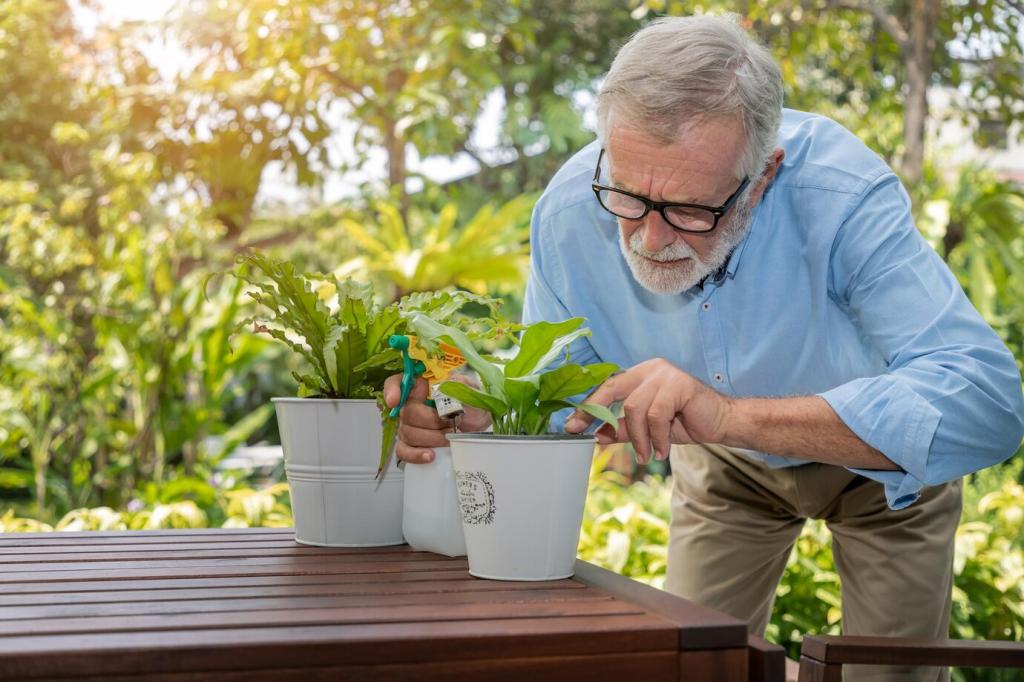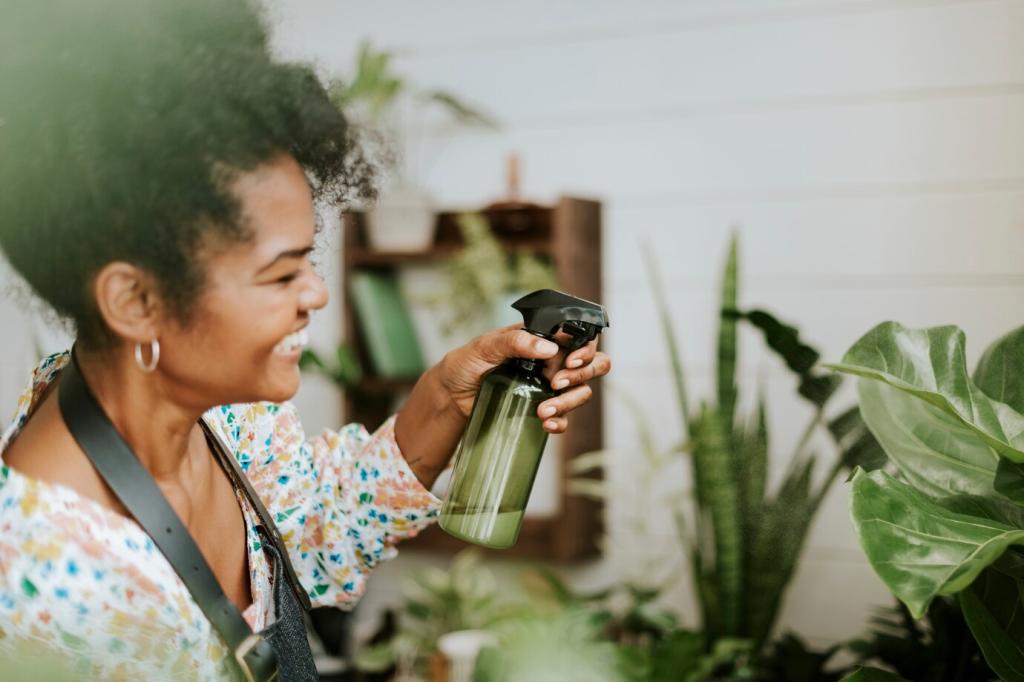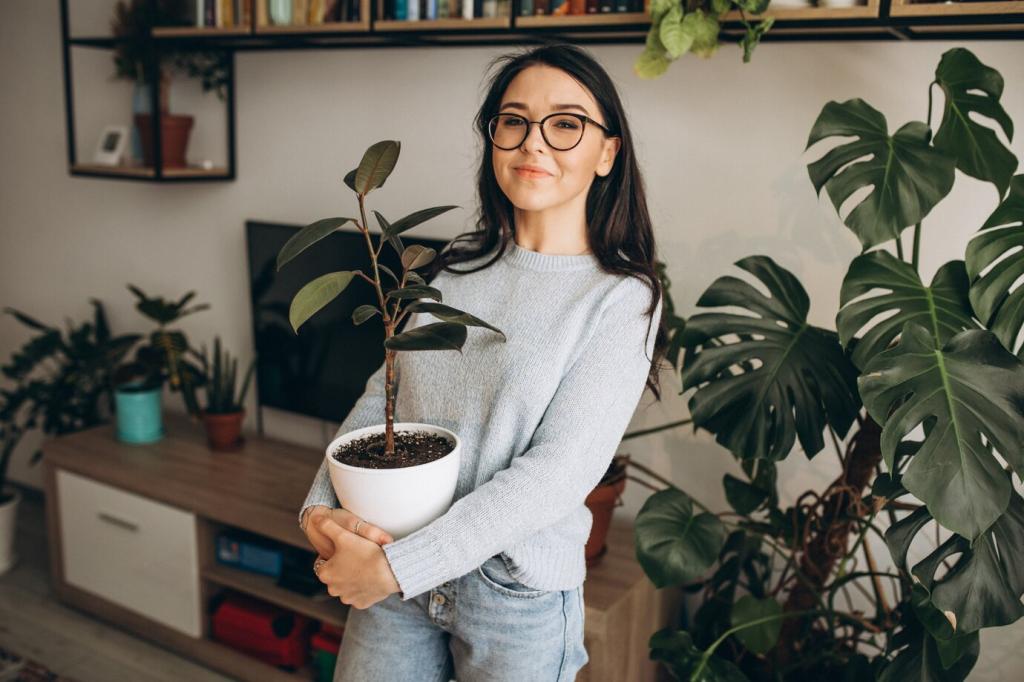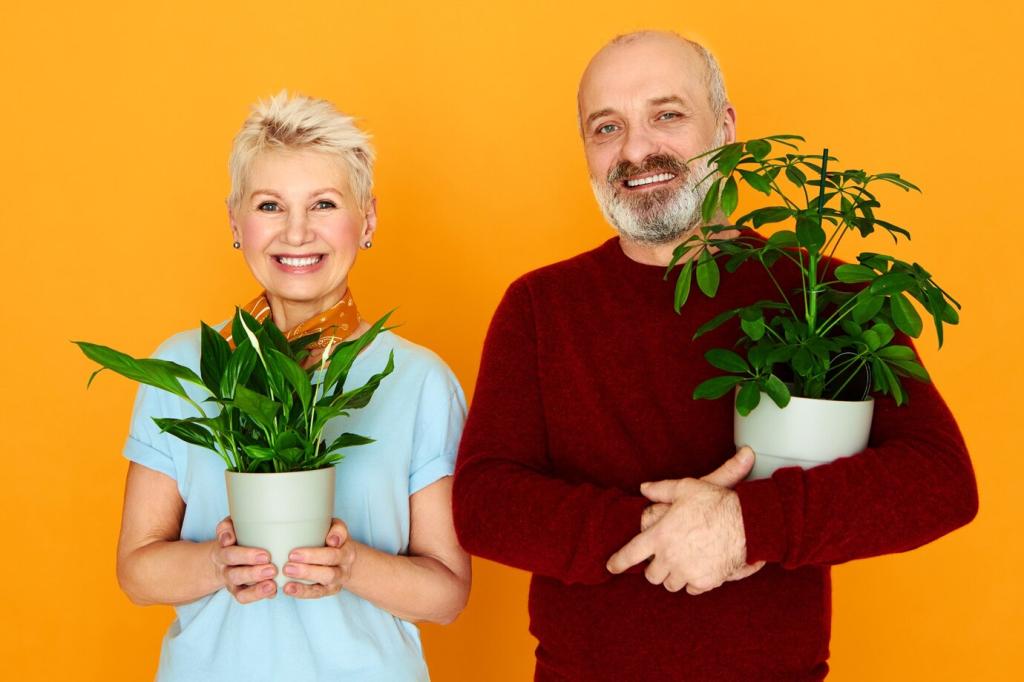Improving Air Quality with Indoor Greenery
Bringing greenery indoors is more than just a stylistic choice—it’s a practical solution for enhancing the quality of the air we breathe every day. As urban environments and closed spaces become the norm, ensuring fresh and healthy air inside our homes and workplaces has never been more important. Indoor plants work as natural air filters, detoxifying the air and improving overall wellbeing. Learn how indoor greenery can transform your environment into a healthier, more vibrant space through the science of clean air and the art of caring for houseplants.

How Plants Clean the Air
Plants possess the remarkable ability to absorb airborne toxins through their leaves and roots, a process that goes beyond simple photosynthesis. Through specialized cells and natural transpiration, greenery can remove substances such as formaldehyde, benzene, and xylene—common pollutants from furniture, paint, and cleaning agents. Roots and soil microbes further contribute to filtration, converting harmful compounds into benign byproducts. NASA’s famous Clean Air Study highlighted specific species—like spider plants and peace lilies—that excel at eliminating toxins, underscoring how commonplace foliage can radically enhance indoor air quality.

The Role of Oxygen and Humidity
Another critical aspect of indoor greenery’s benefit lies in its natural adjustment of oxygen and humidity levels. During photosynthesis, plants absorb carbon dioxide and release oxygen, making indoor air fresher and more invigorating. Furthermore, as plants transpire, they add moisture to the environment, which helps maintain optimal humidity—even in artificially heated or cooled spaces. Balanced humidity reduces irritation in the skin, eyes, and respiratory system. Higher oxygen and appropriate humidity combine to create interiors that feel more alive and breathable, fostering comfort and reducing health complaints linked to arid or stuffy air.
Choosing the Right Plants for Cleaner Air
Best Species for Maximum Filtration
Certain species stand out as highly effective indoor air purifiers due to their resilience and exceptional filtering properties. Plants like snake plant, philodendron, and golden pothos are celebrated for their ability to extract formaldehyde, xylene, and toluene from the air. Their robust nature means they thrive even with minimal daylight and limited watering, making them ideal for busy settings. Peace lilies, bamboo palms, and spider plants have also been studied for their ability to handle multiple toxins simultaneously. These versatile green companions are more than decorative; they are powerful allies in achieving consistently pure indoor air.
Matching Plants to Living Spaces
The size and function of your indoor spaces play a critical role in determining which plants are most suitable. In larger rooms or open-plan offices, tall palms or rubber trees can provide significant coverage, continuously filtering air over a wide area. For smaller apartments or compact offices, petite species like ferns, aloe vera, or African violets offer powerful purification without sacrificing precious space. Bathrooms benefit from moisture-loving plants such as Boston ferns, while low-light corners can be enlivened with hardy varieties like ZZ plant. Matching each plant to the environment ensures both health benefits and the plant’s longevity.
Caring for Air-Purifying Plants
Ensuring your selected plants remain healthy is crucial to maintaining their air purification abilities. Healthy plants grow vigorously, maximizing their leaf area and efficiency in filtering air, while neglected plants decline and lose their impact. Regular watering, appropriate lighting, and occasional feeding with natural fertilizers enhance growth and resilience. Keeping foliage free from dust through gentle wiping further boosts performance, as clean leaves can absorb more pollutants. Proper care routines not only foster plant vitality but also strengthen their role as ongoing guardians of air quality in your indoor spaces.
Emotional and Psychological Benefits of Greenery

Stress Reduction Through Nature Connection
Simply being surrounded by green, living organisms has a calming effect on the mind. The color green in itself is associated with tranquility, restoration, and balance. Studies have shown that everyday interactions with houseplants—watering, pruning, or even observing their gentle growth—can lower blood pressure, decrease anxiety, and improve mood. For those spending long hours indoors, especially in high-pressure work environments, having accessible greenery provides micro-moments of respite from digital screens and artificial light, infusing natural rhythm and energy into daily routines and helping counterbalance modern stressors effectively.

Improved Productivity and Focus
Beyond stress reduction, indoor plants have demonstrated measurable improvements in concentration, memory retention, and overall productivity. Greenery in workspaces is linked with better task performance, reduced fatigue, and a more attentive mindset. The presence of plants introduces minor, regular changes in light and movement, which the brain finds stimulating yet non-distracting. This leads to improved focus during complex or repetitive tasks and a creative boost when problem-solving. Schools, studios, and offices that embrace indoor greenery often report higher satisfaction and efficiency among students and staff alike—a testament to the subtle power of connecting with living systems.
Enhancing Aesthetic and Emotional Comfort
Aesthetically, indoor plants bring softness, color, and organic shapes to spaces often dominated by hard surfaces and straight lines. This introduction of natural forms makes rooms feel cozier and more inviting, indirectly promoting a sense of safety and emotional comfort. People instinctively gravitate towards environments that resemble natural habitats, so integrating greenery enriches home and work lives with a touch of the outdoors. Furthermore, plants can provide a sense of accomplishment and purpose as individuals nurture and witness growth over time, creating personal meaning beyond simply the visual transformation of a room.
